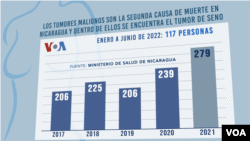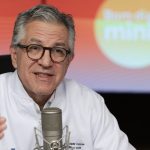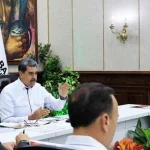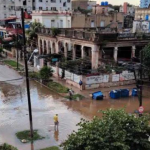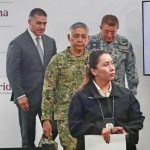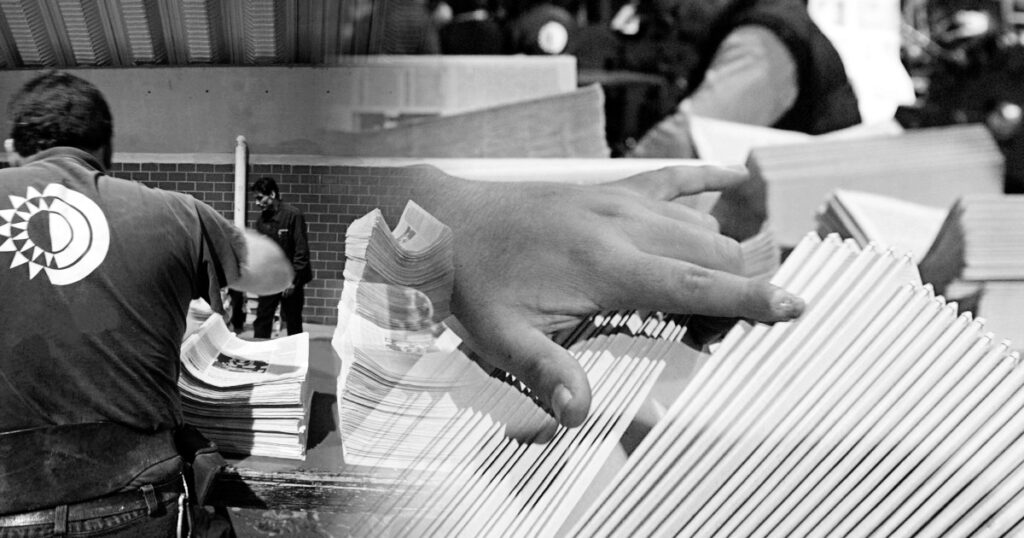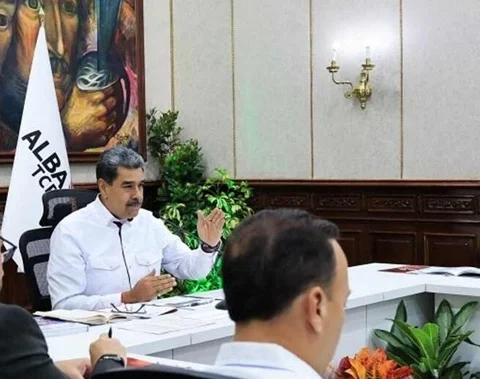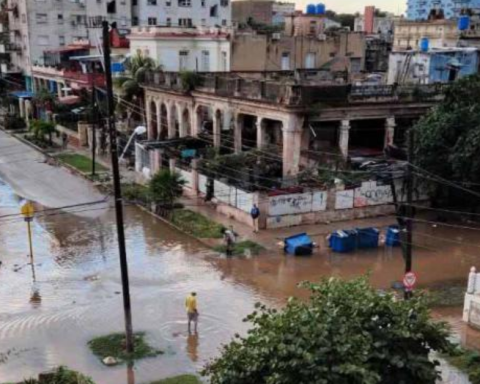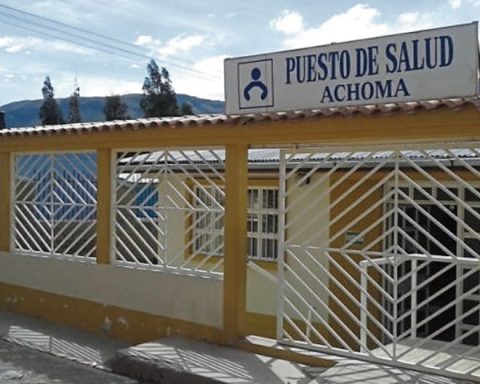A strong pain in one of the arms that was reflected to the left nipple was one of the most notable symptoms that Brenda Ruiz, a Nicaraguan woman, presented before being diagnosed with breast cancer when she was 34 years old.
At first he tried to underestimate him, says Ruiz who is 49 years old today. At first he believed that it was some kind of common illness, so he self-medicated to relieve the pain.
“Pain like that, like other women, that balls come out of their breasts, I didn’t have. It was just a pain on the side of the arm, on the elbow, ”she told the voice of america the woman originally from Estelí, a city located about 150 kilometers north of Managua.
But a fortuitous encounter with a nurse to whom she expressed her feelings alerted her. So she showed up to a clinic where she underwent a fine-needle aspiration biopsy, or FNA. The test consists of the extraction of a total or partial sample of a tissue to be examined.
Ruiz recalled how his doctor began to remove some of the epithelial tissue. Finally, the doctor told him that he required more studies before giving a diagnosis. The woman, however, suspected that something was wrong: “Is it cancer, is this cancer?” She asked.
Her doctor sought to calm her down, asking her not to be “negative”.
However, the cancer diagnosis was later confirmed at a public hospital in the city of Estelí.
“It’s breast cancer for you, but it can still be treated,” said the doctor.
She took the news calmly, says the woman, although during the telephone conversation with the voice of america he pauses and cries as he remembers what he experienced.
“Thank the Lord that my brother worked in the hospital and he helped me a lot not to wait too long. He mobilized, spoke with the doctors and they operated on me quickly, I would be a very liar if I told him that it took me months, ”he assures.
Ruiz underwent a mastectomy, surgery to completely remove the breast tissue. She then had to attend six chemotherapy sessions and another six radiotherapy sessions.
“I put all my trust in my heavenly father. He was the one who gave me the strength to keep going because in these processes where there are more negative people than positive ones”, he says. “I felt low self-esteem, especially because of people who made fun of my physical appearance.”
Cancer in Nicaragua increases
In Nicaragua, breast cancer is the second leading cause of death in women, according to the Ministry of Health. Between January and June 2022, some 117 have been diagnosed with this type of cancer, in a country of just 6 million inhabitants.
Epidemiologist Leonel Argüello explained to the VOA that to date this problem has not been a priority for the health authorities, despite being two of the main causes that kill Nicaraguan women.
“In some way this denotes discrimination against women and an attack against the right to health of the spine of our country,” he said.
And official data has revealed an increase in breast cancer diagnoses in recent years, going from 206 cases in 2017 to 279 in 2021.
Argüello, who was also the founder of the Ministry of Health in Nicaragua, believes that “there should be more health education so that the population can improve their self-care.”
According to this expert, it is essential to prevent breast cancer through early diagnosis for timely treatment.
According to the US Centers for Disease Control and Prevention (CDC), deaths from breast cancer have decreased over time, but it remains the second leading cause of cancer death among women overall and the leading cause of cancer death among Hispanic women.
CDC show several signs to consider for early diagnosis, such as having a new lump in the breast or axilla (under the arm).
Also the increase in thickness or swelling of a part of the breast, as well as irritation or sinking of the skin in this area, redness or scaling in the nipple area.
Also some type of discharge from the nipple, including blood, can be a warning sign, or also any change in the size or shape of the breast, as well as presenting pain in that area.
Prevention through mammograms and self-examination
The US Preventive Services Task Force, made up of physicians and disease experts, recommends that women between the ages of 50 and 74, and who are at average risk of breast cancer, have a mammogram every two years.
Meanwhile, women between the ages of 40 and 49 should talk with their doctor or other health care provider about when they should start having mammograms and how often.
In Brenda’s case, no family member had been previously diagnosed with cancer, although they did have other diseases such as diabetes and hypertension.
After surviving the disease, Brenda Ruiz assures that she learned to perform a breast self-examination and once a year she goes to a public hospital to get a check-up.
“You look excellent,” my doctor tells me at each consultation. “So far I’ve done well. I haven’t had any problems,” she concludes.
Connect with the Voice of America! Subscribe to our channel Youtube and turn on notifications, or follow us on social media: Facebook, Twitter and Instagram

